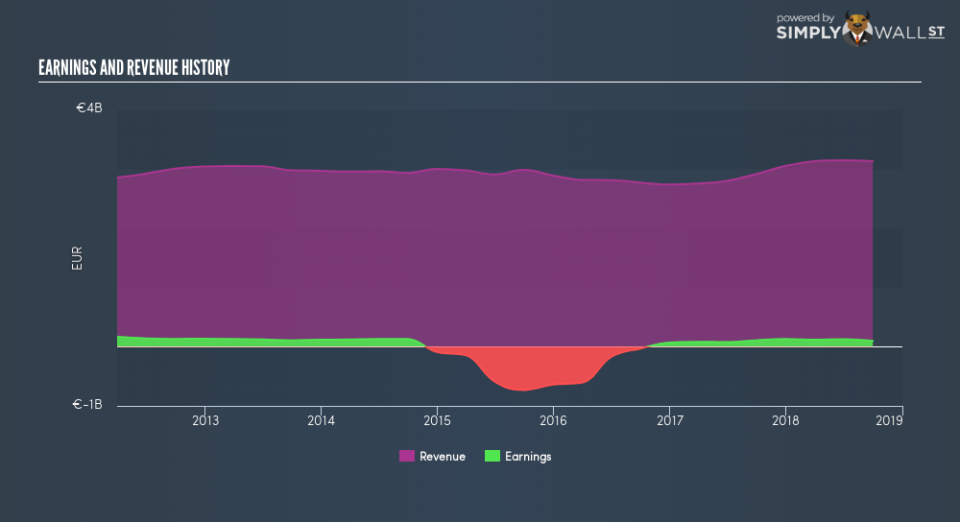Is Indra Sistemas, S.A. (BME:IDR) A Volatile Stock?

Want to participate in a short research study? Help shape the future of investing tools and you could win a $250 gift card!
Anyone researching Indra Sistemas, S.A. (BME:IDR) might want to consider the historical volatility of the share price. Modern finance theory considers volatility to be a measure of risk, and there are two main types of price volatility. First, we have company specific volatility, which is the price gyrations of an individual stock. Holding at least 8 stocks can reduce this kind of risk across a portfolio. The second type is the broader market volatility, which you cannot diversify away, since it arises from macroeconomic factors which directly affects all the stocks on the market.
Some stocks are more sensitive to general market forces than others. Beta can be a useful tool to understand how much a stock is influenced by market risk (volatility). However, Warren Buffett said ‘volatility is far from synonymous with risk’ in his 2014 letter to investors. So, while useful, beta is not the only metric to consider. To use beta as an investor, you must first understand that the overall market has a beta of one. A stock with a beta below one is either less volatile than the market, or more volatile but not corellated with the overall market. In comparison a stock with a beta of over one tends to be move in a similar direction to the market in the long term, but with greater changes in price.
View our latest analysis for Indra Sistemas
What IDR’s beta value tells investors
As it happens, Indra Sistemas has a five year beta of 1.03. This is fairly close to 1, so the stock has historically shown a somewhat similar level of volatility as the market. If the future looks like the past, we could therefore consider it likely that the stock price will experience share price volatility that is roughly similar to the overall market. Share price volatility is well worth considering, but most long term investors consider the history of revenue and earnings growth to be more important. Take a look at how Indra Sistemas fares in that regard, below.
Does IDR’s size influence the expected beta?
Indra Sistemas is a small company, but not tiny and little known. It has a market capitalisation of €1.7b, which means it would be on the radar of intstitutional investors. Small companies often have a high beta value because the stock price can move on relatively low capital flows. So it’s interesting to note that this stock historically has a beta value quite close to one.
What this means for you:
It is probable that there is a link between the share price of Indra Sistemas and the broader market, since it has a beta value quite close to one. However, long term investors are generally well served by looking past market volatility and focussing on the underlying development of the business. If that’s your game, metrics such as revenue, earnings and cash flow will be more useful. This article aims to educate investors about beta values, but it’s well worth looking at important company-specific fundamentals such as Indra Sistemas’s financial health and performance track record. I urge you to continue your research by taking a look at the following:
Future Outlook: What are well-informed industry analysts predicting for IDR’s future growth? Take a look at our free research report of analyst consensus for IDR’s outlook.
Past Track Record: Has IDR been consistently performing well irrespective of the ups and downs in the market? Go into more detail in the past performance analysis and take a look at the free visual representations of IDR’s historicals for more clarity.
Other Interesting Stocks: It’s worth checking to see how IDR measures up against other companies on valuation. You could start with this free list of prospective options.
To help readers see past the short term volatility of the financial market, we aim to bring you a long-term focused research analysis purely driven by fundamental data. Note that our analysis does not factor in the latest price-sensitive company announcements.
The author is an independent contributor and at the time of publication had no position in the stocks mentioned. For errors that warrant correction please contact the editor at editorial-team@simplywallst.com.

